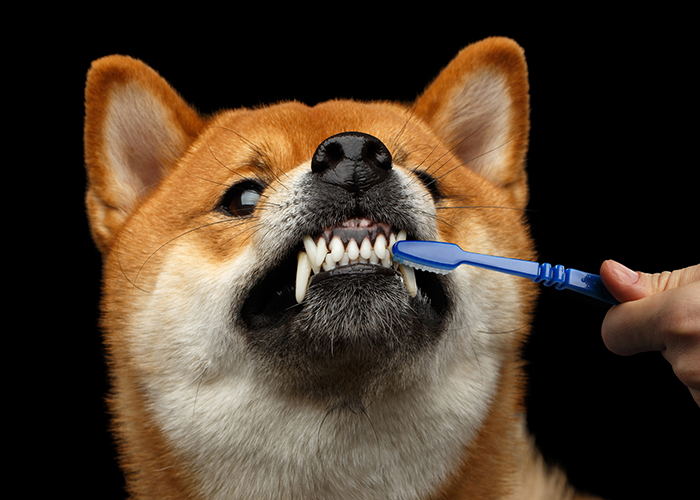 Dentists recommend that we brush our teeth at least twice a day for 2 minutes a session. Flossing should also be included in that daily ritual. It is all about promoting good oral hygiene. It turns out that your dog needs to same level of attention with his teeth; just maybe not the flossing. Yes, dogs can experience gum disease, too. This is why you should get into a daily habit of brushing your dog’s teeth. Ideally, these sessions should take place after a walk and they’ve had their exercise. They should put them in a more mellow mood. Here’s the best approach to take for your doggie dental care.
Dentists recommend that we brush our teeth at least twice a day for 2 minutes a session. Flossing should also be included in that daily ritual. It is all about promoting good oral hygiene. It turns out that your dog needs to same level of attention with his teeth; just maybe not the flossing. Yes, dogs can experience gum disease, too. This is why you should get into a daily habit of brushing your dog’s teeth. Ideally, these sessions should take place after a walk and they’ve had their exercise. They should put them in a more mellow mood. Here’s the best approach to take for your doggie dental care.
Start Slow
If you’re just starting the brushing regimen, then you’ll want to go slow so that the dog will get used to the routine. It is best to start them out as a puppy so it becomes more of a habit for them. After going slow and introducing them to the tastes and sensations of the brush, you can increase the duration of the session until they get their two minutes in!
Pick the Right Toothpaste
You can never use human toothpaste on your dog. It will contain fluoride which is very poisonous to dogs. There are plenty of dog-centric toothpastes available wherever pet food is sold. This is where you’ll pick up the toothbrush, too. They can either be a standard toothbrush like you use or a finger toothbrush. Try both to see which is the better fit.
Think Dry Food
If there is some irritation with your dog’s gums, then you might want to make the switch to dry food (unless you have already). The crunching food is better because it doesn’t tend to stick to a dog’s teeth like soft food would.
Add Chew Bones
Doggie dental care has been important for years. You’ll noticed this with all the products designed specifically for oral care. Look for the synthetic bones and chew toys that are for dental health. They might seem hard but they’re flexible which means they won’t damage the teeth like actual bones might.
Warning Signs
You should be giving your dog’s mouth a good inspection at least once a week. If you notice any of the following signs on a persistent basis, then it might be time to get him checked at the vet:
- Bad breath
- Change in eating or dog chewing habits
- Pawing at the face or mouth
- Depression
- Excessive drooling
- Misaligned or missing teeth
- Discolored, broken, missing or crooked teeth
- Red, swollen, painful or bleeding gums
- Yellowish-brown tartar crust along the gum line
- Bumps or growths within the mouth
In extreme cases, oral surgery might be prescribed but your vet will know the best course. With regular brushing you can do a lot to improve your dog’s oral health. Same with you!

